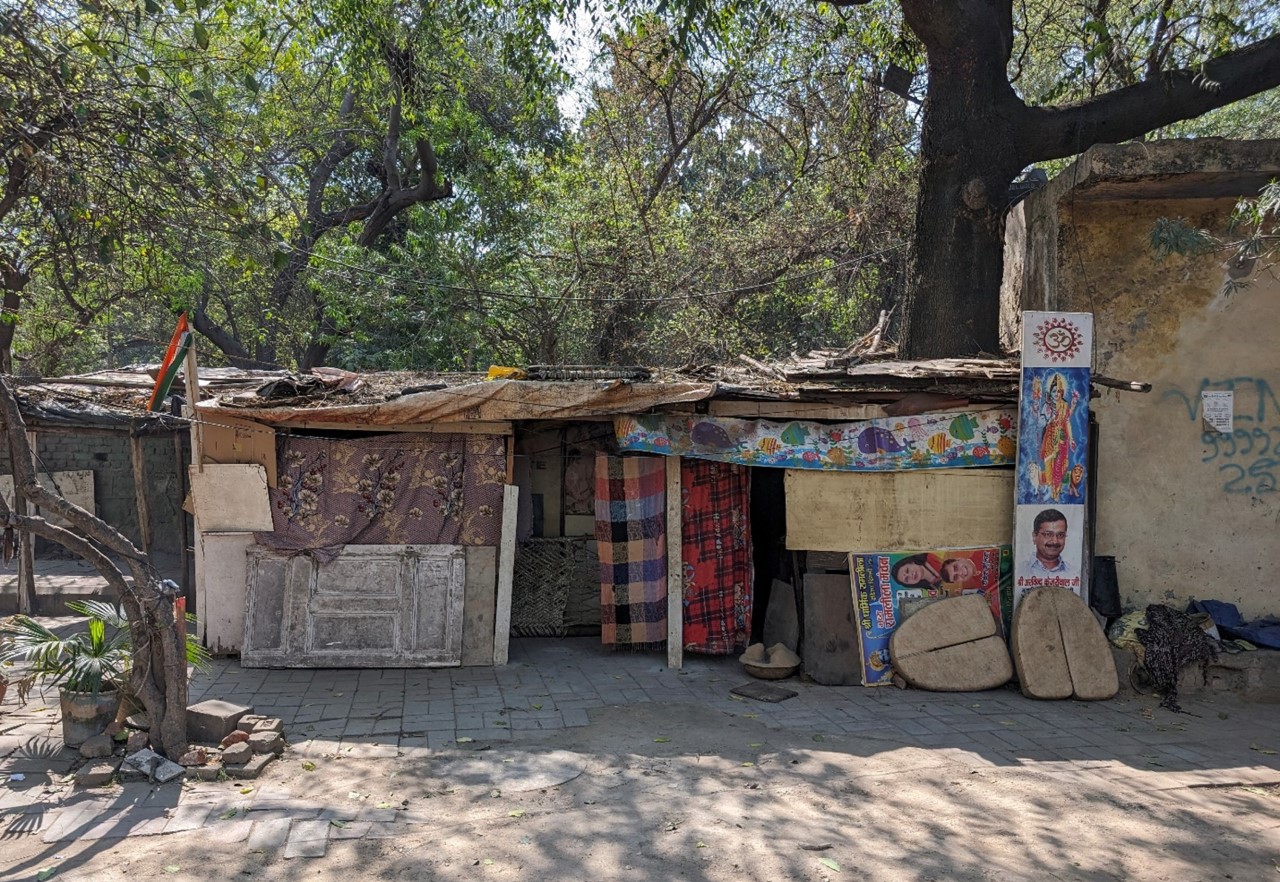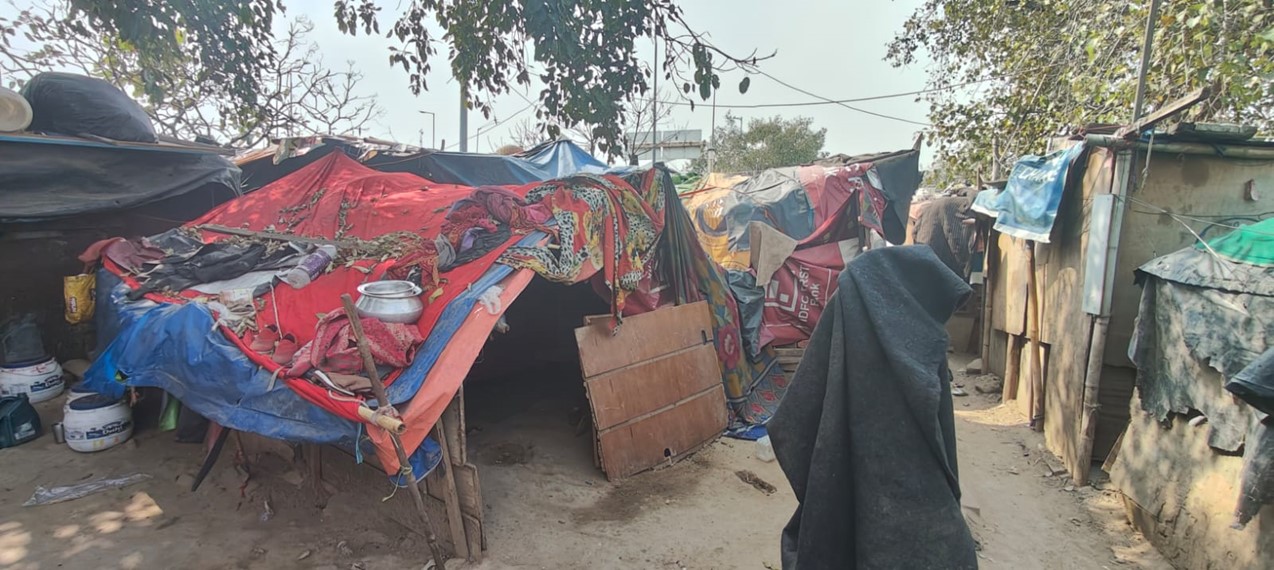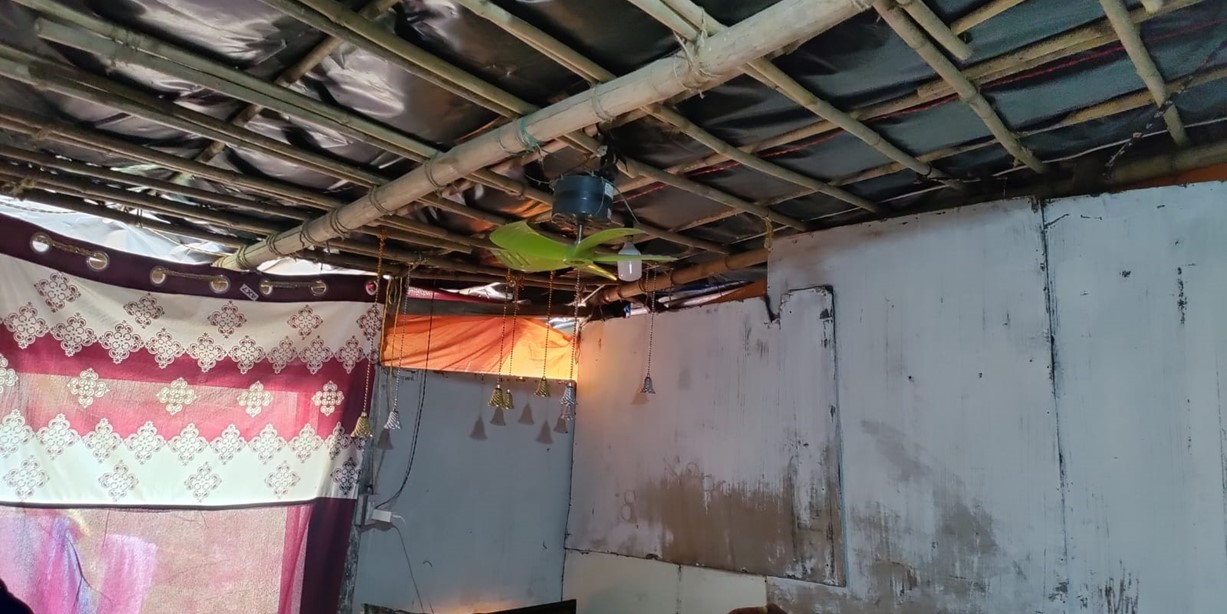Living on the edge: The impact of extreme temperatures on Delhi’s informal communities
by Neha Bhakar, Vineet Anand and Allina Tiwari
Jun 3, 2024
5 min
This year, Delhi faced severe heat waves with temperatures that soared past 45C. The most vulnerable people—those who live in informal settlements—suffered the brunt of this extreme weather. We highlight the urgent need for sustainable cooling solutions and better access to essential services to enhance resilience among these marginalized communities. Read our blog to learn more about the findings and recommended interventions to support Delhi’s most vulnerable residents.
Multiple cities in India’s northern and eastern regions experienced maximum temperatures that exceeded 44°C this year. The National Capital Region of India is currently reeling from heatwave conditions where temperatures have crossed 45C. Extreme heat disproportionately impacts vulnerable people’s lives and livelihoods particularly those who live in informal settlements in urban areas of the developing world.
18-year-old Aasha is part of the informal Gadia Lohar settlement situated by the main road in Chirag Delhi, a densely-populated urban village in South Delhi. Aasha says the relentless heat has made her life unbearable and intensified existing health issues for the past few summers. It has made simple tasks, such as finding potable water and other purposes, a daily ordeal.

Aasha and her community have to buy costly bottled water or fetch it from distant sources due to the lack of a formal water supply. Despite her efforts to address the water crisis through complaints to the Delhi Jal Board (Delhi’s water supply department) responsible for the production and distribution of drinking water, little was done. Sanitation is also a critical challenge. Her community has limited access to clean toilets and water, which impacts women’s health in particular. They source electricity illegally from nearby poles but cannot use it to run fans or coolers since it is unstable. Their makeshift “kutcha” houses, with tarpaulin roofs and tin walls, trap heat during the scorching summers. This makes indoor temperatures unbearable and forces the family to sleep outside despite safety risks.
Aasha’s story is not unique and mirrors the struggles of countless other informal settlement residents across the National Capital Region (NCR). The absence of basic facilities and extreme weather hazards make daily life a relentless battle.

Studies indicate that Delhi has been experiencing “dangerous” heat index levels. The latest Intergovernmental Panel on Climate Change (IPCC) report, 2023, highlighted that climate change adversely impacts human health, livelihoods, and key infrastructures in urban areas, particularly for economically and socially marginalized informal urban residents. These groups remain at a greater risk of dehydration, heat cramps, and heat exhaustion, especially during heat waves, which can lead to more severe conditions if not treated promptly.
In its white paper, “Enabling and financing locally-led adaptation,” MSC emphasizes why it is important for policymakers and stakeholders to adopt a holistic systems approach to address the impact of extreme heat on vulnerable communities. Large-scale climate events affect individuals and critical components of the broader system, such as communities, hospitals, and infrastructure. Understanding the drivers of resilience at the individual, community, state, and national levels, can enable us to identify effective interventions that cater to the needs of vulnerable populations.
MSC conducted a study on the impact of extreme temperatures on Delhi’s informal settlements to uncover their experiences in dealing with the impacts of extreme heat. Our study’s findings underscore the impact of extreme temperatures on marginalized communities and highlight their existing struggles with poverty and living conditions. Heat waves exacerbate physical, health, economic, and social challenges due to congested and poor living conditions and their informality.

*MSC’s study, using our flagship MI4ID training approach, collected data from respondents in focus group discussions across seven informal settlements in the NCR.
We uncovered the residents’ limited coping strategies in the face of extreme heat. Short-term strategies people adopted were to cover roofs with wet quilts, seek shade under flyovers and trees, stay hydrated, and take frequent breaks, particularly for physically demanding outdoor jobs. Residents cooked multiple times to prevent food spoilage, often during the early hours of the day.
However, their informality was a constant source of vulnerability. When residents use tarpaulins for shade outside their houses during extreme heat, municipal authorities accuse them of encroachment. The informal residents we spoke to also struggled to invest in solutions, such as pucca houses and electrical appliances, among others, to address the longer and medium-term impacts of climate change on their lives and livelihoods.
Their urgent and immediate focus was to meet basic needs, like food, water, and shelter. They struggle to survive against the elements due to various problems that range from water scarcity and inadequate sanitation to subpar housing and health risks. The impacts of climate change, compounded by poverty and urban inequality, exacerbate their vulnerabilities and affect their health, economic stability, and overall well-being.

The impacts of extreme heat on informal urban residents require dedicated interventions to provide sustainable cooling solutions and support to address the immediate health and economic impacts of extreme heat. Some potential sustainable cooling solutions that could work for such communities include the following:
- Solar-reflective paint on exteriors can lower indoor temperatures significantly;
- Geothermal air conditioning taps into the earth’s stable temperatures for cooling;
- Cool roofs can be constructed with materials that reflect sunlight to help reduce heat absorption;
- Urban green spaces provide natural cooling through shade and moisture release;
- The incorporation of natural ventilation and passive cooling in built environments can help reduce internal temperatures.
These methods offer sustainable ways to mitigate global warming’s impact and enhance vulnerable informal urban residents’ resilience. However, we must meet informal residents’ pressing needs and continued sources of vulnerabilities, such as access to clean drinking water, improved sanitation facilities, and secure housing to build their resilience to extreme heat.
Municipal authorities and policymakers must recognize that resilience to climate change and improvements in overall well-being are two sides of the same coin. They must prioritize interventions that enhance and support slum communities to build resilience to extreme heat. If they understand local knowledge, risks, and practices, they can inform effective policies and interventions tailored to the needs of informal urban settlements’ residents. We require a significant change in access to public services that addresses the vulnerabilities due to informality. We must also find sustainable cooling solutions to ensure that vulnerable informal urban residents become more resilient to the impacts of extreme heat.
The Housing and Land Rights Network (HLRN), located in New Delhi, is a leading organization dedicated to research, education, and advocacy on housing and land rights. MSC acknowledges HLRN’s support in connecting with important informal settlements and community stakeholders across Delhi for the study.
 by
by  Jun 3, 2024
Jun 3, 2024 5 min
5 min


Leave comments